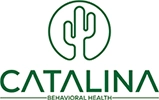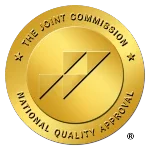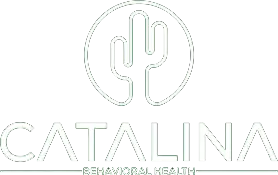Get Accredited Programs to Quit Meth at Catalina in Tucson
Over the last half-decade, methamphetamine has quietly been growing into an epidemic of its own. Dwarfed by the fentanyl epidemic, the methamphetamine issue was initially overlooked, as most of the nation’s focus was on the overdose death rates caused by opioids.
However, as methamphetamine overdose deaths surge and mental health concerns loom regarding meth abuse, the problem is impossible to ignore. Meth addiction treatment has recently been propelled to the forefront of society, as many rehabs have been forced to adjust to deal with the influx of individuals suffering from stimulant abuse disorder.
Treating methamphetamine use disorder is difficult because of the wide range of symptoms users experience. It’s a highly complex drug that acts differently on each person who engages in abuse.
To understand meth addiction treatment, it’s first imperative that you know methamphetamine itself. The following article will dive into both to better understand the meth/treatment dynamic and Catalina Behavioral Health offers proven therapies to promote lasting recovery.
Accredited Meth Detox and Addiction Treatment Programs
What Is Methamphetamine?
Crystal meth is a dangerous drug that can cause severe problems if misused. Methamphetamine is a type of crystal meth that has been changed to make it more addictive and potent. There are several different forms of methamphetamine, including ice, powder, and pill form. Crystal meth can be expensive and dangerous to use, so it is essential to know what it is and what risks it poses before using it.
Methamphetamine is a powerful stimulant drug that is chemically similar to amphetamine. It is often used as a recreational drug and can be bought on the street or produced in home laboratories. Methamphetamine can damage the brain and body, leading to problems with memory, judgment, and coordination.
Some versions of methamphetamine are entirely legal, as seen in examples like Adderall and other prescription medications. However, most methamphetamine consumption occurs illegally, in crystal meth.
Where Does Meth Come From?
Crystal meth is created in large batches, primarily in Mexico, in what’s known as a super-lab. Crude ingredients are used that are sourced from around the globe in a concoction that’s blended to eventually produce the result of crystal meth.
Methamphetamine, or meth, is a highly addictive drug. It is also one of the most commonly abused drugs in the world. There are a few different types of meth addiction treatment programs, but they all have unique strengths and weaknesses. Some people find residential rehab programs the most effective treatment for their meth addiction.
Meth addiction treatment has come a long way in recent years. Whether someone is using meth recreationally or for financial gain, drug addiction is a severe problem that needs to be addressed. Treatment options abound, so finding the right one for the individual in need is essential.
Features of Effective Meth Addiction Treatment

Methamphetamine addiction generally starts with medical detoxification. Methamphetamine abuse and overuse can produce physical dependence, which can cause unpleasant withdrawal symptoms after quitting. Hence, a medically assisted detox followed by therapy is likely recommended by your healthcare provider.
Cognitive-Behavioral Therapy
It teaches new and drug-free ways to cope with stress in life. CBT therapy focuses on shifting behavior to stop unhealthy patterns. We need to recognize our reaction to environmental or emotional cues, stop impulsively reacting, and adopt a healthier approach.
The Matrix Model
People who struggle with methamphetamine addiction can benefit from the Matrix Model, a 16-week behavioral therapy program. In addition to behavioral therapy, counseling, 12 steps, drug testing, and promotion of non-drug-related activities, the program involves family education, family counseling, and family education.
Contingency Management Intervention
Motivation through reward is the basis of this addiction treatment method. This program, in conjunction with therapy, offers incentives for accepting treatment and maintaining abstinence. One program that uses motivational incentives is Motivational Incentives for Enhancing Drug Abuse Recovery (MIEDAR), which has been proven to be an effective treatment option in methamphetamine addiction recovery.
The purpose of meth addiction treatment is to assist in treating the mental ramifications of methamphetamine abuse. However, physical risks may also happen in the form of a methamphetamine overdose.
Can You Overdose On Meth?
Crystal meth is a powerful stimulant that can lead to an overdose if taken in excessive doses. Signs and symptoms of crystal meth overdose include agitation, hallucinations, cardiac irregularities including heart attacks, and coma. Narcolepsy and hyperthermia are also possible side effects of crystal meth use. In extreme cases, crystal meth overdose can lead to death.
In the past, crystal meth overdoses resulting in death were few and far between. It was known that individuals could overuse methamphetamine, but rarely did reports surface of a traditional overdose.
However, with this new wave of methamphetamine thanks to the cartel super-labs, the most potent form of the drug that’s ever existed is flooding the streets of America. This unique, more concentrated form of the drug has led to the highest meth overdose rates in our nation’s history.
The number of deaths resulting from these overdoses is astounding, reaching numbers we’ve never hit. To avoid meth overdose, also known as overamping, one must be aware of the signs of meth dependence.
Meth dependence can easily lead to overdose when individuals require higher doses of the drug to achieve their desired state of intoxication. Intravenous meth use, also known as slamming meth, leads to more rapid dependence as well as increased risk of overdose.
What Are the Warning Signs of Meth Dependence?

In the early stages of methamphetamine use, it may be challenging to identify someone with a dependence issue. However, no matter how subtle the user is, eventually, the drug overtakes them, and the addiction will become more apparent.
For some, the signs may be more evident than for others. However, for other people, taking a closer look may be required. Some of the most common symptoms include:
- Staying awake for days at a time without sleep
- Paranoia with increasing intensity. Users may feel like someone is following them, watching them, or sabotaging some area of their lives.
- Grinding teeth or jaw
- Dark circles under the eyes
- Deteriorating dental condition
- Biting nails
- Unexplained energy
- Unpredictable behavior
- Sudden unexplained behavior changes
- Starting multiple tasks at once without finishing any of them
- Repetitive behavior
In many cases, one of the first steps in methamphetamine recovery is detox.
Licensed Addiction Treatment
Can You Detox from Methamphetamine?
Medical professionals assist the patient in managing the withdrawal symptoms while the drug is being cleared from the body. A drug treatment program for substance use disorders (SUDs) often begins with detoxification or meth withdrawal management.
Detoxification is usually followed by inpatient or outpatient rehab if the person wishes to pursue further treatment. The right program for addressing addiction’s behavioral and social aspects (and other relevant needs) will be found for patients undergoing a medically-assisted detox program.
Meth detoxification can provide the following benefits:
- Risk assessment for medical/mental health issues. When people withdraw from meth, they may feel depressed or have suicidal thoughts, so medical supervision can help them stay safe.
- Structure and support are provided. Recovery can be easier with this kind of support, which can prepare a person for further treatment.
- Meth users should be taken out of the environment where they use the drug. Reducing environmental cues can reduce cravings that may lead to relapse.
- Assisting with nutritional needs if needed. Those suffering from meth addiction may need support such as larger or high-calorie meals, electrolyte supplements, or consultation with a dietary specialist because meth misuse can result in weight loss and inadequate nutrition.
Entering detox for methamphetamine will help ease the discomfort of withdrawal symptoms. However, it’s essential to be aware of what the meth withdrawal timeline looks like, especially if you choose to go through detox at home (which isn’t recommended).
What is the Meth Withdrawal Timeline?
Withdrawal occurs during a specific time frame for each individual, but the acute phase generally ends about a week after the last use. In some cases, psychological symptoms, such as mood swings and agitation, drug cravings, and sleep disturbances, can last for months or even years.
First Two Days
It occurs within one day after stopping the use of the drug and is known as the “crash.” Former users will experience nausea, abdominal cramps, and sweating within 24-48 hours after stopping use.
Days 3-9
During this time, withdrawal symptoms are typically at their peak. It is common for recovering Meth users to experience severe depression, anxiety, and fatigue as their bodies adjust to life without Meth. Shaking and lingering muscle aches are also common side effects, as are intense drug cravings.
Days 10-20
Most physical symptoms begin to subside by the third week, but drug cravings can last for months. This period is also characterized by fatigue and depression.
20 Days to 1 Month-Plus
As time progresses, any remaining symptoms will fade away. Depression and anxiety may persist for several months for some people, however.
The Risks of At-Home Meth Detox

The use of an accredited detox program is highly recommended for anyone seeking recovery from substance abuse, particularly meth abuse.
Performing a meth detox on your own can be dangerous, as the side effects of withdrawal can range from mild to fatal, depending on how long you use the substance.
Behaving violently
In a brain that has become accustomed to the presence of methamphetamine, mood swings and other mental health disorders can be exacerbated.
As a result, behavioral issues such as violence, mood swings, depression, and anxiety have been reported.
To mitigate this risk, professional treatment facilities, such as our setting at Catalina, are highly recommended.
Attempting suicide
Methamphetamine withdrawal can lead to suicidal thoughts, which is one reason why home detoxification is not recommended.
Suicide risk can be significantly reduced with the help of medications, counseling, therapy, and support groups.
Severe Meth Withdrawal Symptoms
Meth withdrawal symptoms, such as fevers, seizures, and respiratory problems, can be life-threatening and must be managed in a rehab facility.
There are several withdrawal symptoms associated with meth use, including:
- Appetite changes
- Anxiety
- High fevers
- Migraines
- Nervousness
- Shivering
- Pain in the muscles
Help For Meth Addiction
The Benefits of Choosing Meth Addiction Treatment
The benefits of choosing meth addiction treatment end up repaying a client tenfold. However, the most significant benefits include the behavioral health assistance you receive and the knowledge of addiction.
Different benefits exist depending on the specific type of treatment you receive. For example, a client who participates in dual diagnosis treatment may claim various benefits than someone who engages in holistic treatment. The result is heavily dependent on the program and personalized treatment plan.
Meth Addiction and Dual Diagnosis Treatment

Meth addiction and dual diagnosis treatment often go hand-in-hand. Usually, a mental health illness exists at the center of a substance abuse disorder.
While this does happen with meth use disorder, there’s often a different dynamic in play. Because meth users are affected heavily in the mental category, they often end up with mental health disorders because of substance abuse, not vice-versa.
Regardless of the order, dual diagnosis is highly effective in treating these scenarios.
Long-Term Recovery from Methamphetamine Is Possible
While methamphetamine abuse is difficult to overcome and the road can be challenging, long-term recovery is possible. At Catalina Behavioral Health, each client receives a personalized treatment plan and a personal care team that helps them along their journey.
We provide several forms of treatment to assist our clients, giving them several options depending on what seems most effective. They’re also prepared for exiting treatment and educated on the importance of support pillars and aftercare.
To find out how we can help you or your loved one achieve long-term recovery, contact a member of our Admissions staff today.





